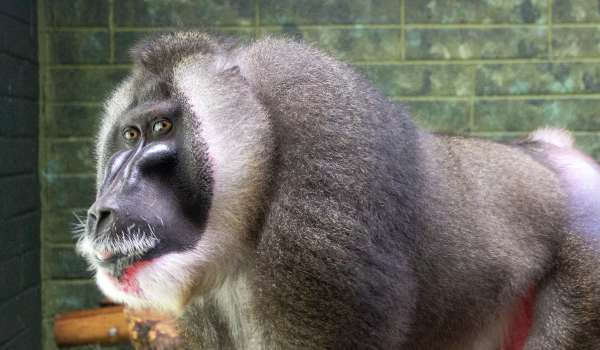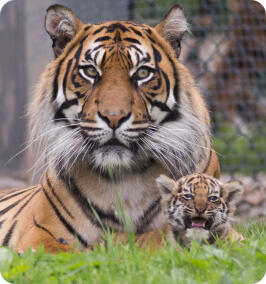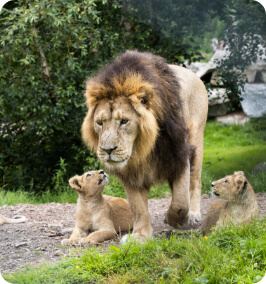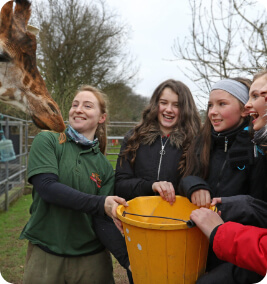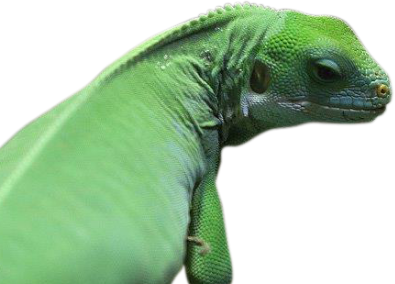Drill
KEY FACTS
-
LATIN NAMEMandrillus leucophaeus
-
BIOMETropical Forests
-
CLASSMammal
-
ORDERPrimates
-
CONSERVATION STATUSEndangered
COME AND FIND ME AT..
The Drill Habitat

About the Drill
The drill is a primate of the Old World monkey family, Cercopithecidae. They are related to baboons and even more closely related to mandrills though they lack the highly colourised face of the mandrill. As one of the world’s largest monkeys, drills display high sexual dimorphism, with males growing to double the size of females. On average, a male drill weighs between 30 to 50kg with the much smaller female weighing between 12 to 20kg. Males have dark faces with a white fringe of hair surrounding it. They have a long muzzle with pronounced lateral ridges. Adults males have large canine teeth and an area of red skin between their lower lip and chin. Their coat is dark in colour with a colourful naked rump. Females are a lighter brown colour.
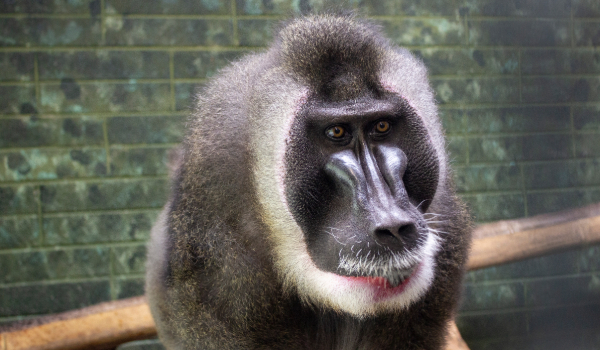
Habitat
Found only in dense, primary forests in West and Central Africa, including Cross River State, Nigeria, Southwestern Cameroon, and on Bioko Island, Equatorial Guinea. Their entire range is less than 40,000 km2, equivalent to half the size of the island of Ireland.
Wild Notes
Most of the troop’s day is likely spent travelling in search of food and they are known to have very large, seasonal home ranges. Their food of choice is mainly fruit but during the dry season or when fruit is scarce, they will feed off young leaves and other plant material. They will also forage for seeds, insects, and other invertebrates in the detritus on the forest floor. They have pouches in their cheeks which can hold as much food as their stomach!
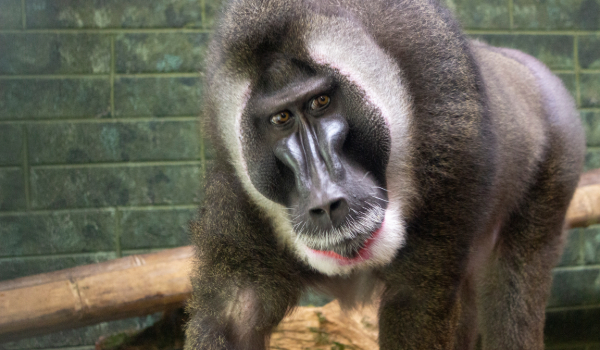
Conservation
Drills are among Africa’s most endangered mammals-it is believed that there may be as few as 3,000 individuals remaining in the wild. Major threats include deforestation and the ever-expanding unsustainable trade in bush meat. Often, hunters will use dogs to drive large troops of drills into trees, where they are easily ambushed.
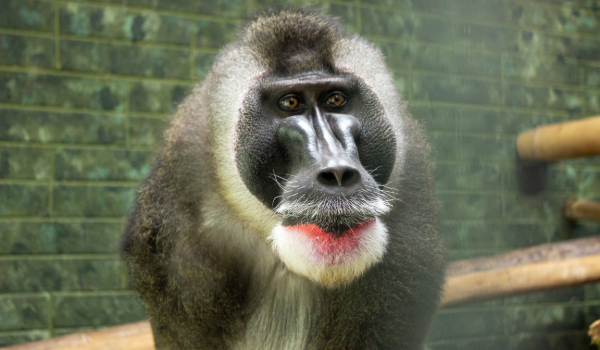
Did You Know?
They live in troops comprising of multiple females and one or more males, sometimes totalling 20 or more animals. There is one dominant male per troop. Drills communicate through scent marks, vocalizations, and body language. They walk on the flat of their hands and feet unlike the great apes and even though they can climb, they are mainly found on the forest floor.
The Fota Connection.
Despite an ever-declining population in the wild, very few captive Drill populations are held in zoos. Fota Wildlife Park is the only Irish zoological facility to house this endangered species. In 2019, the park welcomed a male (Julian) and female (Buddy) on loan from Stuttgart Zoo, Germany. Shortly afterwards, they were joined by three additional females on loan from Bristol Zoo. They have a large purpose-built house and have outdoor access to one of the largest Islands in the wildlife park which offers this critically endangered species a varied and stimulating habitat.
